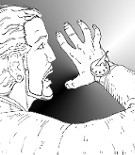Template:Selected anniversaries/December 2: Difference between revisions
No edit summary |
No edit summary |
||
| Line 57: | Line 57: | ||
||1943: René de Saussure dies ... Esperantist and professional mathematician (he defended in 1895 a doctoral thesis on a subject in geometry in Geneva), who composed important works about Esperanto and interlinguistics from a linguistic viewpoint. Pic. | ||1943: René de Saussure dies ... Esperantist and professional mathematician (he defended in 1895 a doctoral thesis on a subject in geometry in Geneva), who composed important works about Esperanto and interlinguistics from a linguistic viewpoint. Pic. | ||
||1943: The air raid on Bari (German: Luftangriff auf den Hafen von Bari, Italian: Bombardamento di Bari) was an air attack by German bombers on Allied forces and shipping in Bari, Italy, on 2 December 1943, during World War II. 105 German Junkers Ju 88 bombers of Luftflotte 2 surprised the port's defenders and bombed shipping and personnel operating in support of the Allied Italian Campaign, sinking 27 cargo and transport ships, as well as a schooner, in Bari harbor. The attack lasted a little more than an hour and put the port out of action until February 1944. The release of mustard gas from one of the wrecked cargo ships added to the loss of life. The British and US governments covered up the presence of mustard gas and its effects on victims of the raid. | |||
||1949: The "Green Run" was a secret U.S. Government release of radioactive fission products on December 2–3, 1949, at the Hanford Site plutonium production facility, located in Eastern Washington. Radioisotopes released at that time were supposed to be detected by U.S. Air Force reconnaissance. Freedom of Information Act (FOIA) requests to the U.S. Government have revealed some of the details of the experiment. Sources cite 5,500 to 12,000 curies (200 to 440 TBq) of iodine-131 released, and an even greater amount of xenon-133. The radiation was distributed over populated areas. | ||1949: The "Green Run" was a secret U.S. Government release of radioactive fission products on December 2–3, 1949, at the Hanford Site plutonium production facility, located in Eastern Washington. Radioisotopes released at that time were supposed to be detected by U.S. Air Force reconnaissance. Freedom of Information Act (FOIA) requests to the U.S. Government have revealed some of the details of the experiment. Sources cite 5,500 to 12,000 curies (200 to 440 TBq) of iodine-131 released, and an even greater amount of xenon-133. The radiation was distributed over populated areas. | ||
Latest revision as of 16:49, 27 March 2025
1409: The University of Leipzig opens. Famous future alumni will include Leibniz, Goethe, Ranke, Nietzsche, Wagner, Angela Merkel, Raila Odinga, and Tycho Brahe.
1594: Mathematician, cartographer, and philosopher Gerardus Mercator dies. He is most renowned for creating the 1569 world map based on a new projection which represented sailing courses of constant bearing (rhumb lines) as straight lines—an innovation that is still employed in nautical charts.
1831: Mathematician Paul David Gustav du Bois-Reymond born. He will work on the theory of functions and in mathematical physics.
1942: During the Manhattan Project, a team led by Enrico Fermi initiates the first artificial self-sustaining nuclear chain reaction.
1966: Mathematician and philosopher L. E. J. Brouwer dies. He made contributions to topology, set theory, measure theory and complex analysis; and he founded the mathematical philosophy of intuitionism.
1987: Physicist, astronomer, and cosmologist Yakov Borisovich Zel'dovich dies. He played a crucial role in the development of the Soviet Union's nuclear bomb project, associated closely in nuclear weapons testing to study the effects of nuclear explosion from 1943 until 1963.






